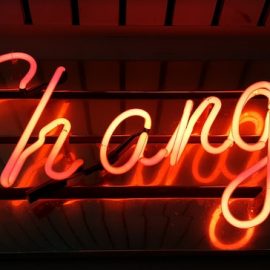

This article is an excerpt from the Shortform book guide to "The Intelligent Investor" by Benjamin Graham. Shortform has the world's best summaries and analyses of books you should be reading.
Like this article? Sign up for a free trial here .
What is dividend theory? Why do businesses have different dividend policies and what do they mean?
Dividend theory is how businesses divide their profits among investors. Many businesses have set dividend policies. Additionally, the standard dividend policy meaning has changed over time.
Read more about dividend theory and how it’s changed over time.
Dividend Theory
So how does dividend theory work? In the first half of the 20th century, it was common for businesses to pay out the majority of profits to shareholders. This seems like common sense—the purpose of a business is to make money, and that money should belong to shareholders. Successful businesses therefore paid high dividends, while faltering businesses paid only a paltry amount.
However, over time the opposite fashion emerged—businesses began retaining more of their profits and reduced dividend payments. (Shortform note: In the 1960s, companies paid 55-60% of its profits; in recent years, the payout ratio is closer to 30%.)
The theoretical justification was that the business could use the profits to further grow the business, and so the money was better retained in the business than paying shareholders. For a set of growing businesses that clearly could deploy capital to achieve growth, this made sense.
This trend inverted how successful businesses behaved—the more successful, growing businesses paid less in dividends (as a percentage of profits); shareholders, enthusiastic about the growth in stock price, happily accepted this situation. In contrast, faltering businesses couldn’t lift their stock price through growth, so they had to pay dividends instead.
Over time, as this habit became the new normal, the dividend policy meaning morphed into a signal about future company prospects. If a profitable, growing company with no history of paying dividends suddenly began doing so, it might suggest that the company had run out of good ideas to reinvest its profits. Counter-intuitively, paying dividends might lead to a decrease in stock price, since shareholders would worry that the company’s growth was soon to stop. Guided by this fear, companies refrained from paying dividends.
Why should the shareholder care if the company doesn’t pay dividends? Wouldn’t this cash simply be stored up to be paid at some later time? Not if the company wastes the cash on unprofitable projects. It might fund expensive acquisitions or costly expansions into industries in which it has no competence. This wasted cash would have been better put into the pockets of shareholders.
As an active investor, you should not take the dividend policy of management on faith. Every company that earns money should by default pay it out to its investors. If management decides not to pay dividends, it is their responsibility to argue that it can deploy this money profitably. If it fails to meet its promises, dividends should be paid in the future, or management should be replaced.
Now that you know the dividend policy meaning, you can use it to guide your investments.

———End of Preview———
Like what you just read? Read the rest of the world's best book summary and analysis of Benjamin Graham's "The Intelligent Investor" at Shortform .
Here's what you'll find in our full The Intelligent Investor summary :
- Key advice from what Warren Buffett considers the "best book about investing"
- The 2 major indicators you should use for evaluating stocks
- How you can use aggressive or defensive investing strategies






